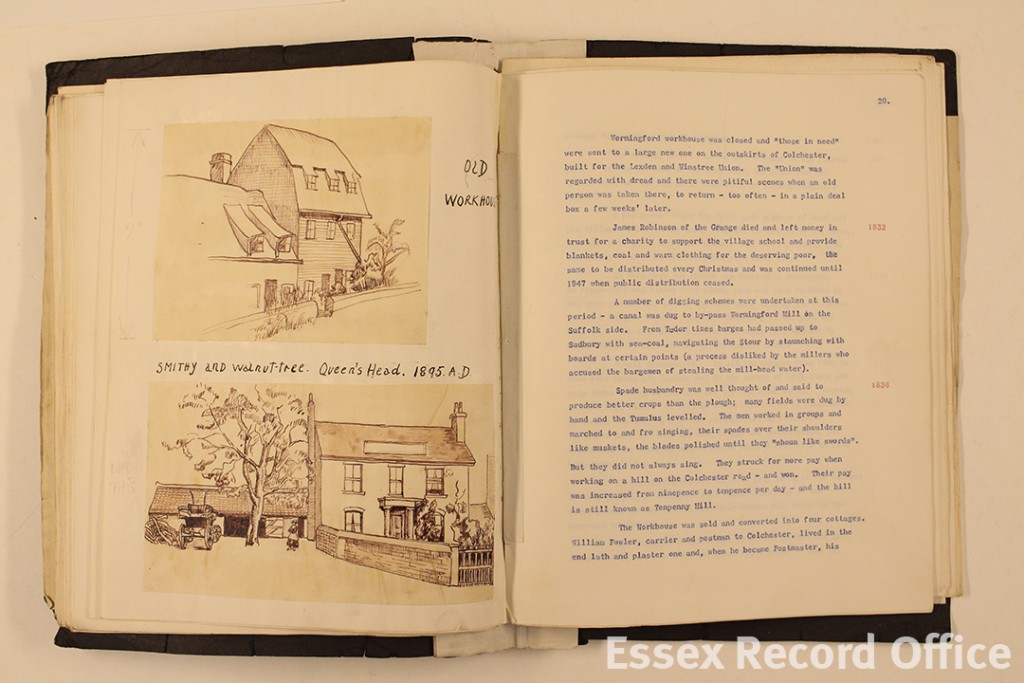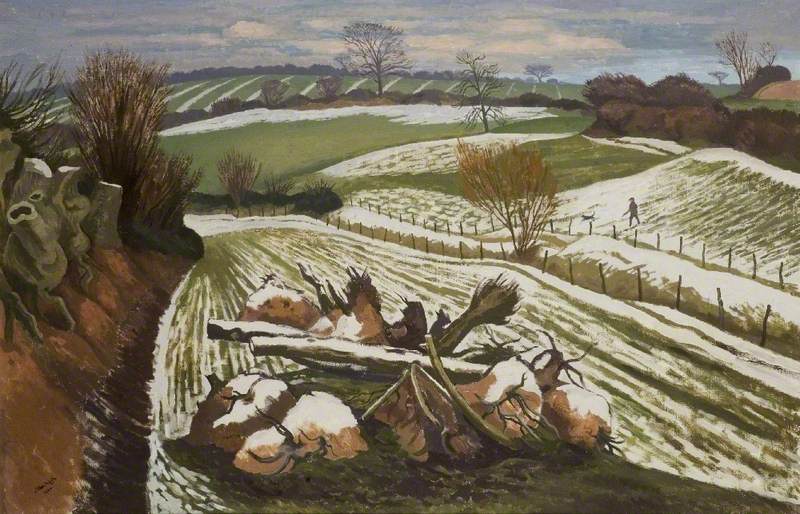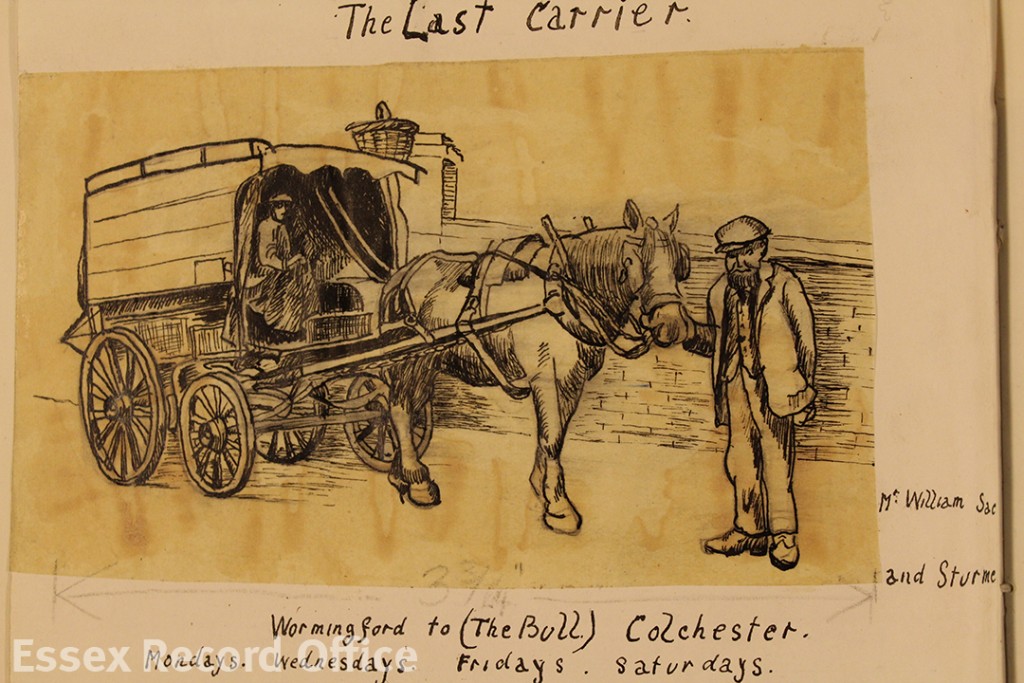Carol Walden, Archivist
September sees the opportunity to visit a huge range of locations across England through Heritage Open Days. Here at Essex Record Office we will be open 10am-4pm on Saturday 10 September and we’ve taken the theme of creativity in the archives to inspire our choice of activities and displays.
The current document of the month in the Searchroom is a history of Wormingford compiled by the Women’s Institute (WI) in 1958. The village is located approximately halfway between Colchester and Sudbury to the south of the River Stour. The history records the creation of Wormingford WI in 1926 saying that early talks included ‘How to keep a husband happy’ that decided ‘food and tobacco did the trick’! Due to the lack of a venue for meetings the WI petered out. It was re-started in 1949 when a village hall was built and C1046 and A11292 contain various records of the group.
The history draws on a number of sources to tell the story of the village from Palaeolithic times with copies of original records, photographs and illustrations. The latter are of particular note as they are reputed to have been sketched by local resident John Northcote Nash CBE, RA.
The information we have is that the illustrations are by Nash, but they are unsigned and there is no contemporary note in the typescript that they are by him. This could potentially be explained by the fact that none of the individual contributors to the history are named. A published edition of the history names his wife, Christine Nash, as the author of a drawing used on the front cover, but doesn’t attribute the other illustrations to anyone. We are attempting to make contact with art history specialists to confirm whether the information we have that the sketches are by John Nash is correct.
Nash was certainly part of the local scene at the time the history was being compiled. From 1929 he spent the summers in Wormingford and in 1944 bought Bottengoms Farm in the village. He painted several scenes of the local area, such as this one of Melting Snow at Wormingford (1962) which today is at the Beecroft Art Gallery in Southend.
Nash was born in London in 1893 and later moved to Buckinghamshire. He began to train as a journalist but switched career path to follow his brother, Paul Nash, as an artist. Paul enrolled at the Slade School of Fine Art in London, which opened opportunities for both brothers; they went on to hold a successful joint exhibition of their work in London in November 1913.
In the autumn of 1916 John joined the Artists’ Rifles, fighting on the western front for nearly two years before becoming an official war artist, as his brother had already done. Much of his work from this time, including Over the Top (1917), is today held at the Imperial War Museum.

‘Over The Top’. 1st Artists’ Rifles at Marcoing, 30th December 1917© IWM (Art.IWM ART 1656)
After the First World War Nash continued to paint in oils and watercolours as well as doing drawings and woodcuts for book illustrations, especially related to botany. From the 1920s to the end of his life Nash taught in Oxford at the Ruskin School of Art and in 1940 he was commissioned into the Royal Marines as an official war artist. Between the wars he had travelled extensively across Britain filling sketchbooks with drawings and notes to later be developed in the studio.
Nash was a founding member of the Colchester Art Society in 1946, serving as president between 1946 and 1979. He also taught at the Colchester Art School and held plant illustration classes at Flatford Mill in Suffolk. He continued to paint until his death in Colchester in 1977 and was buried at St Andrew’s, Wormingford.
The village history displayed in the Searchroom contains a number of sketches purported to be by Nash of views around Wormingford, including the ford, the old workhouse, the Queen’s Head and the mill. It is open to the pages showing a drawing of Mr William Sac, the last carrier, along with his horse Sturme and another of his cottage. The carrier departed Wormingford at 9.30am and arrived at The Bull, Colchester at 12 noon. It left for the return journey at 4.30pm arriving back in the village at 7pm, all for the cost of 6d for adults, 3d for children and parcels at 2d.
Other entries in the document mention the appearance of a ‘beast’, possibly a crocodile, in the valley (1400); visits by Elizabeth I to the village; accounts of witches, such as ‘Old Jemima’ (1880); bombs dropped by a Zeppelin in Metland Field (1914); and the Americans manning the airfield who ‘taught the village to chew gum’ (1939).
The typescript will be on display in the ERO Searchroom throughout September 2016.
Join us for our Heritage Open Day on Saturday 10 September, 10am-4pm – full details here.



